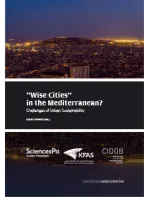Mediterranean Cities and Vertical Farming: Fostering Sustainable Local Food Production and Building Neighbourhood Esprit de Corps

In 2010, for the first time in the history of the world, the proportion of the world’s population living in cities exceeded 50% (UN, 2014), despite the world’s cities occupying only 3% to 4% of the planet’s land area (Schirber, 2005). Such a proportion is projected to rise further to 60% by 2030 and to over 70% by the middle of the century, when global population is projected to reach 9.7 billion (FAO, 2009). People the world over are drawn to live in cities because cities, quite simply, constitute the world’s undisputed economic engine. Just 600 cities today account for about 60% of the global economic output (Dobbs et al., 2011). By 2025, the world’s top 600 cities will be home to an estimated 220 million more people of working age and will account for more than 30% of the expansion of the potential global workforce (Dobbs et al., 2011). The biggest economic transformation the world has ever seen is occurring today simultaneously with the population expansion of cities in emerging markets, generating millions of new consumers with rising incomes and whose spending power will change the way the world shops – including people living in cities buying more of their food locally.